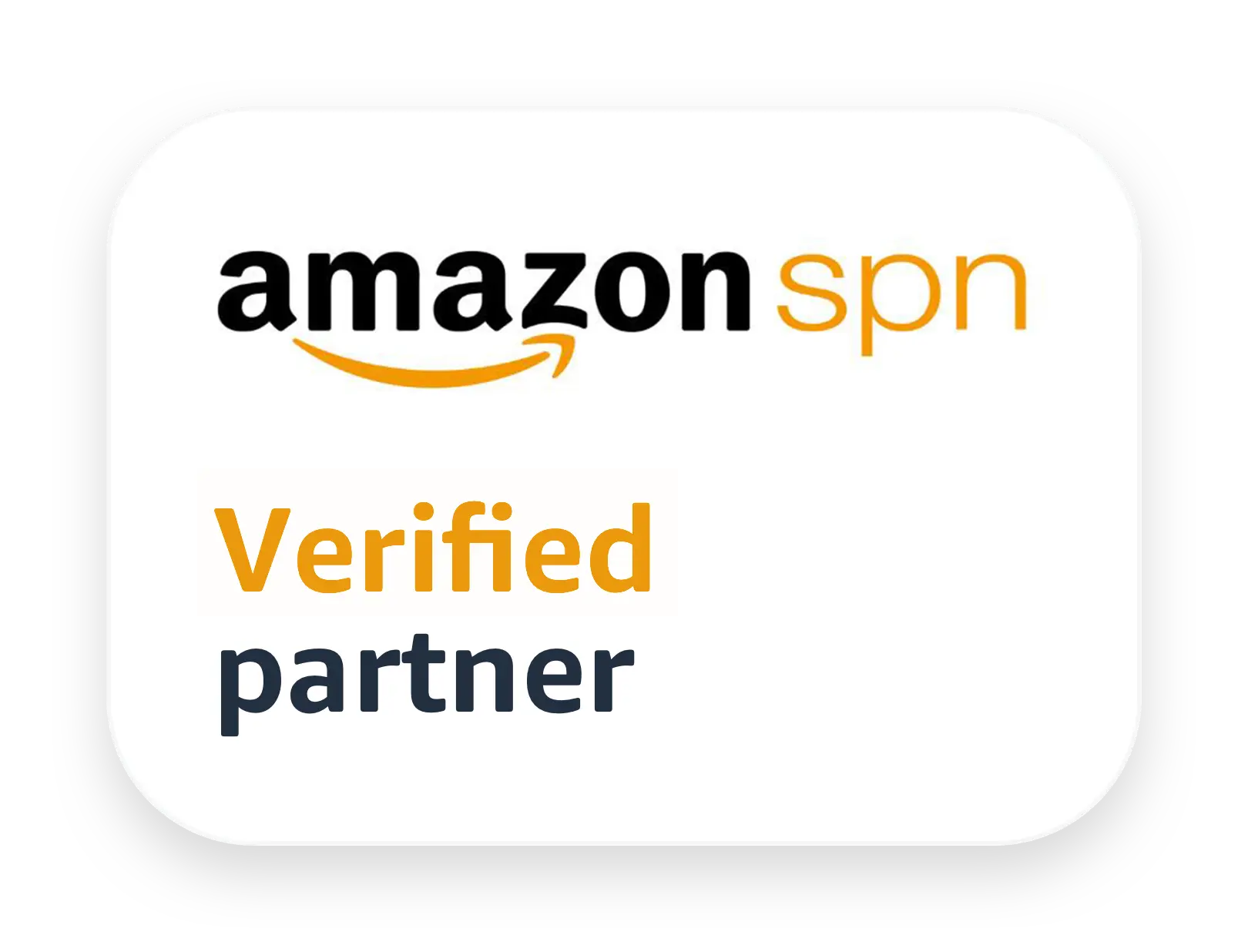So, you’ve picked a niche.
You’ve sourced the product.
You’re ready to list it on Amazon.
Then suddenly, Amazon asks for a Product ID — a GTIN, UPC, EAN, or ISBN — and you don’t have one.
For thousands of sellers, this is the first real roadblock they face after product research. And it can stall your launch before it ever begins.
That’s where GTIN Exemption comes in — a simple but often misunderstood process that lets you sell on Amazon without a barcode.
And for many private label, handmade, or customized products, it’s not just an option — it’s essential.
Let’s break it down.
What is a GTIN?
A GTIN — Global Trade Item Number — is a universal identifier used to track products worldwide. Amazon uses it to keep its catalog clean, avoid duplicate listings, and improve the buying experience.
There are several types of GTINs:
- UPC (common in the U.S.)
- EAN (Europe)
- ISBN (books)
- JAN (Japan)
When you buy a product at a store and scan its barcode, you’re using a GTIN.
But here’s the issue: many new or niche products don’t come with one. If you manufacture your own goods, sell bundles, or customize items, you likely won’t have a barcode at all.
What’s the Difference Between GTIN and ASIN?
It’s easy to confuse them.
- GTIN: External identifier, issued globally (from GS1)
- ASIN: Amazon’s internal identifier, assigned after your product is listed
Amazon requires a GTIN to create a new ASIN — unless you’re granted a GTIN exemption.
Why Amazon Cares About Barcodes (and Why You Should Too)
GTINs help Amazon:
- Prevent duplicate listings
- Keep catalog data clean and searchable
- Ensure buyers know what they’re getting
For you as a seller, using valid GTINs (especially GS1-issued) protects your listings from being flagged, suppressed, or removed.
Note: If you buy cheap UPCs from third-party sites not linked to GS1, Amazon may reject your listing or suspend it later.
In fact, Amazon has tightened its enforcement in recent years. Only GS1 barcodes — or approved exemptions — will pass Amazon’s back-end checks reliably.
When GTIN Exemption Makes Sense
There are many legit reasons you might not have a barcode.
Let’s go through some examples:
Handmade or Artisan Products
If you sell candles, pottery, jewelry, or any handmade goods, they likely don’t have standardized barcodes.
Custom or Personalized Items
Think T-shirts with custom names, wedding favors, engraved mugs, print-on-demand books.
Private Label Launches
If you’re just starting your brand and haven’t yet purchased barcodes from GS1, GTIN exemption lets you move forward quickly — especially for small batches.
Product Bundles
Combining multiple items into a new product listing? Bundles usually don’t have a barcode unless you create one yourself.
Seasonal or One-Off Items
Holiday-specific products, custom SKUs, or market tests with limited units may not justify the cost of GS1 barcodes yet.
ZonHack Tip: Don’t Wait Until Amazon Stops You
At ZonHack, we often meet sellers who wait until they hit the error screen before they realize they need a GTIN exemption.
That’s too late.
A better strategy is to review your products before listing, ask:
- Do I have barcodes from GS1?
- Am I the brand owner?
- Is this a custom product?
- Is the product sold elsewhere on Amazon?
If the answer is no to barcodes and yes to originality, you likely need an exemption.
We help clients map this decision during our Product Launch Readiness Check, so there are no surprises during the listing phase.
How GTIN Exemptions Fit Into Your Amazon Launch Plan
Here’s what most new sellers don’t realize:
GTIN exemption isn’t just a one-time fix. It becomes part of your brand and product documentation, tied to:
- Your brand name
- Your product category
- Your account history
If done wrong, it can delay listing approval, trigger account warnings, or create problems when scaling with bulk uploads later.
At ZonHack, we include GTIN exemption strategy in our full-service Amazon launch plans, because we know how easily it can derail momentum if overlooked.
Step-by-Step: How To Apply for Amazon GTIN Exemption
Step 1: Go to the GTIN Exemption Request Page
Start here:
https://sellercentral.amazon.com/gtinx/home
(If you’re outside the U.S., use your local marketplace URL.)
Step 2: Choose the Product Category
Amazon asks which category your product belongs to — and exemptions are category-specific.
This means if you’re selling in multiple niches, you may need multiple approvals.
Choose the closest accurate category for your product (e.g., Home & Kitchen, Clothing, Beauty, etc.)
Step 3: Enter Your Brand Name or “Generic”
Here’s where many sellers slip up.
- If you have a brand, type the exact brand name you’ll use in your product listing.
- If you’re selling unbranded or handmade products, type “Generic” — yes, literally that word.
⚠️ Important: Once approved, Amazon ties the exemption to this exact brand/category pair. Make sure it matches your future listings.
Step 4: Check Eligibility
Click “Check for eligibility.” If Amazon allows exemptions for your selected brand/category combo, you’ll see a green check mark.
If not, it means you must use a valid GTIN, usually purchased from GS1.
Step 5: Upload Supporting Documents (If Required)
In some cases, Amazon will auto-approve your exemption request right away.
But if not, you’ll be prompted to submit images proving product authenticity and branding.
Here’s what to include:
Image Guidelines for GTIN Exemption
Amazon wants to see real, physical proof that:
- Your product exists
- It’s branded (or clearly unbranded)
- It doesn’t have a barcode
You must upload at least 2–3 photos per ASIN, and they must:
- Show the entire product (front view)
- Show any brand name or packaging (if applicable)
- Be taken against a plain background
- NOT include computer mockups or renders
- NOT show barcodes (unless explaining why it’s missing)
For private label sellers:
If your product has no branding yet, include product photos AND packaging mockups or manufacturing proof.
For handmade sellers:
Include clear, original photos of the handmade item and packaging.
For bundles:
Lay out all items clearly and indicate that the bundle is custom.
ZonHack Tip: Use a Lightbox or Natural Lighting
Many GTIN exemption rejections happen because the images look too staged, unclear, or generic. At ZonHack, we recommend using:
- A plain white or light background (no clutter)
- A smartphone or DSLR in natural daylight
- Close-up shots of logos or packaging details
- A label or printed brand name if it’s still early-stage
We’ve helped dozens of sellers avoid rejections just by upgrading these photos, even with handmade items.
Step 6: Submit & Wait
Once you upload your documents and click submit, Amazon typically responds in 24–48 hours.
You’ll get an email with either:
- Approval: You can now list your product without a GTIN.
- Rejection: Amazon explains what was missing or unclear.
If rejected, you can edit and resubmit with better photos or updated info.
What To Do If Amazon Rejects Your GTIN Exemption
Don’t panic. Rejections are common, especially for first-time applicants.
Here’s what usually causes them:
- Blurry or staged images
- Lack of branding proof
- Discrepancy between listed brand and images
- Submitting a brand name that Amazon already associates with UPCs
Fix the issues and try again.
ZonHack offers direct GTIN exemption support — we review your images, prep packaging documentation, and handle resubmissions if needed. We’ve saved clients weeks of back-and-forth with Amazon’s support.
After Approval: How To List Your Product Without a Barcode
Once your GTIN exemption is approved:
- Go to “Add a Product” in Seller Central
- Enter your product details
- When asked for a product ID, leave it blank — Amazon will allow this based on your approved exemption
- Complete your listing as normal
Amazon assigns an ASIN to your product (just like usual), and you’re live — no GTIN needed.
GTIN Exemption vs GS1 UPCs: Which Is Better?
| Factor | GTIN Exemption | GS1 UPC |
| Cost | Free | $250+ per year |
| Speed | 24–48 hours | Immediate if you have UPCs |
| Brand Trust | Neutral | Higher with GS1-verified UPCs |
| Flexibility | Tied to category + brand | Used for any listing |
| Best for | Handmade, test batches, early-stage sellers | Established brands, big catalog plans |
If you’re planning to scale, GS1 barcodes may be a better long-term investment. But if you’re launching a few SKUs or testing demand, GTIN exemption saves time and money.
Bottom Line: Don’t Let Barcodes Stop Your Amazon Launch
GTIN exemption is one of the most overlooked tools for Amazon sellers. Done right, it unlocks your ability to launch fast, list creatively, and avoid the costs of unnecessary barcodes.
But done wrong? It can delay your launch by weeks.
That’s why smart sellers partner with teams like ZonHack — we don’t just manage GTIN exemptions. We build end-to-end Amazon launch systems that:
- Handle listing approvals
- Design compliant images
- Create optimized listings
- Launch with PPC and SEO from Day 1
Need help launching your product without a barcode? ZonHack will guide you through the GTIN exemption process, from category selection to image submission to listing creation.
Get in touch for a free product readiness review.




